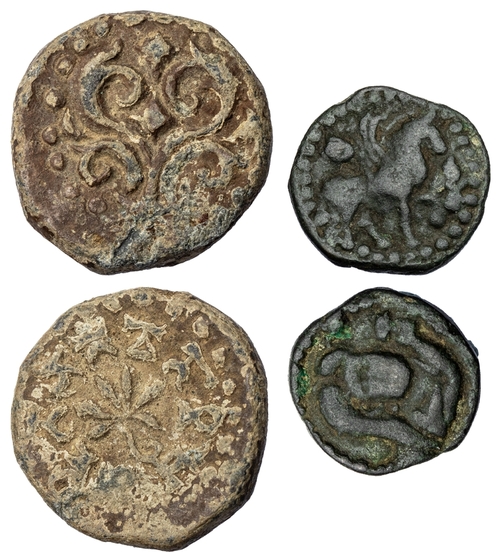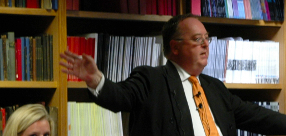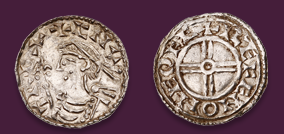
Auction: 25088 - The Nicholas Rhodes Collection of Nepalese Coins Part I
Lot: 6
India, Post-Gupta, Aulikaras of Rajasthan, Anonymous (c. 6-7th century), lead Unit, Obv. with Brahmi legend jitam bhagavata vishnunam (won by the Lord Vishnu) arranged around a lotus flower Rev. large srivatsa (Vaishnavite symbol) within beaded border, 9.68g (Pieper, Ancient Indian Coins Revisited, 901-903 for type), very rare and well-preserved, very fine for type; Anonymous, (undated), Copper Alloy Coin, size of Quarter-Pana, Obv. winged lion facing right within border of dots, sun above, short legend to left of lion's head, Rev. appears to be a portrait in style of coins of Chach / Sogdia, 1.75g, 15.5mm, unrecorded, very fine and very rare (2)
Provenance
The Nicholas Rhodes Collection of Nepalese Coins and Medals: Part One
i) Bhupendra Narayan Shrestha, by private treaty, April 1967
Although this is not a coin of Nepal, the first coin may have been placed in the collection with these coins due to the similarity of the srivatsa on the reverse. Coins of this type were discovered in Mandasor near Nadol, Rajasthan and tentatively ascribed to the Chahamana dynasty of Nadol (fl. 8íth-9íth century) by Bhandare
Regarding the second coin, fractional coins of the Amshuvarman have not been observed as yet and this coin could be a very rare survivor of a small unit, or inserted into the collection as an example of a Sogdian coin.
In an article published in 2011 Nicholas Rhodes considers the possibility that the design of a winged horse may have been borrowed from Central Asia (Sogdiana) and ultimately from Ancient Greek culture: “Also the Lichhavi kingdom of Nepal, based in the Kathmandu Valley, enjoyed a remarkable period of prosperity during the seventh century, no doubt financed by transit trade between Tibet and India.
The coinage of Nepal does provide some interesting indications of what may have been the major trade item at this period. This coinage was entirely of a copper alloy, but the designs are of particular interest. During the early seventh century, coins were struck by the famous ruler, Amshuvarman, with the image of a winged lion on one side within a border of large dots, rather similar to the large dots on the gold coins of Samatata. Under Jishnu Gupta, in c. 630 C.E., the image of a winged horse appeared, with a Srivatsa symbol on the reverse, rather similar to that on the silver coins of Arakan. Later, under Narendra Deva in the 640’s, the obverse images changed to that of a recumbent bull, identical with that on the coins of Arakan.
Although the meaning of these particular images has not previously been discussed in print, the imagery of the winged lion and the winged horse is of particular interest, as the winged horse is identical in artistic treatment to the Greek Pegasus, an image that I have not found in Indian or Nepalese iconography. It could have been interpreted in Nepal as the Pakshiraja horse of South Asian myth, but the artistic treatment does appear to be inspired by a Greek image. The winged lion also seems to be of Central Asian origin, rather than of Indian origin.
The Pegasus image does appear on a Central Asian coin struck around 600 C.E. near Bukhara, so the source of the image may have been goods passing to or from this region of Central Asia. The most likely source of these images may have been the silk roundels that appear on silk fabrics of this period, which often show winged animals within a circular border of large pellets. The silk may have been imported from China via the sea route, up the Bay of Bengal to Samatata, and thence through Pataliputra in the kingdom of Harsha Vardhana, through Nepal and Tibet to Bukhara and beyond to the Sassanian Empire of Iran.” Quoted from Rhodes, N.G. ‘Trade in South East Bengal in the first Millennium CE - The Numismatic Evidence’ Pelagic Passageways: The Northern Bay of Bengal Before Colonialism (Editor: Rila Mukherjee), Primus Books, New Delhi 2011, pp. 269-278.
Subject to 20% VAT on Buyer’s Premium. For more information please view Terms and Conditions for Buyers.
Estimate
Starting price
£70




